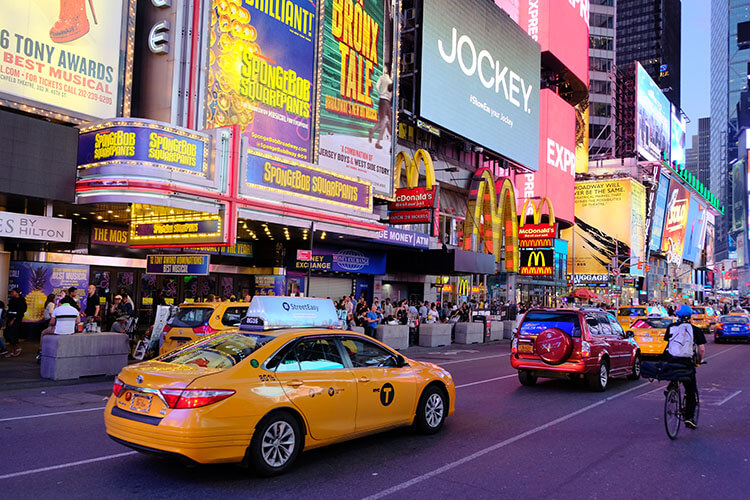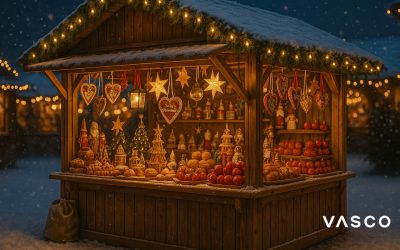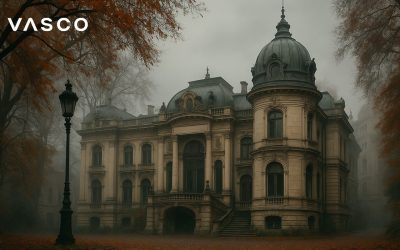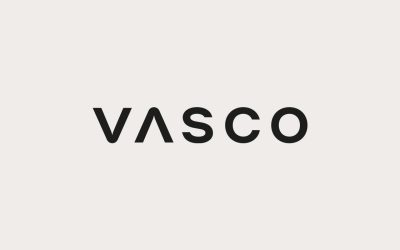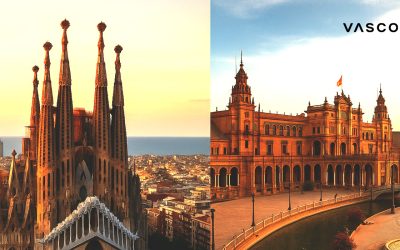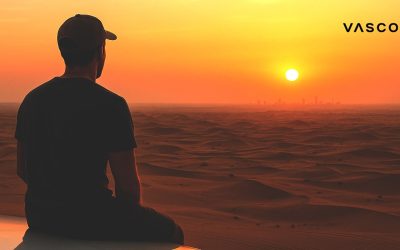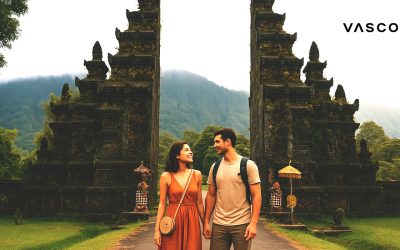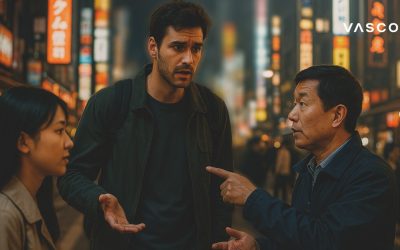From Little Italy to Chinatown. From Little Poland to Koreatown. The Big Apple is a true melting pot and you can make a trip around the world without leaving its confines. But remember to take Vasco Translator M3 with you so you don’t miss anything. Now available at the b8ta shop in Hudson Yards!
FAQ:
What is the significance of Ellis Island?
What are some of the different languages that can be heard in New York City?
What is the Vasco Translator M3?
Ellis Island. This is where you should start as this is where for many it all started. From its establishment in 1892 until its closure in 1954, this little island on the Upper Bay was the entrance to the New World for 12 million people who arrived in overloaded ships from around the world. They came in search of a better life.
Crowded upon the ship’s deck as they entered the harbor, immigrants who had left their entire lives behind gazed at the Statue of Liberty, with her message of hope to the world, “Give me your tired, your poor, your huddled masses yearning to breathe free”. What lay ahead for them, they wondered. Touching land, it was Ellis Island where they took their first steps on American soil. Exhausted and anxious, they were interrogated, registered and finally admitted into America. Then they bravely plunged into the New York metropolis in their pursuit of happiness and the American dream.
Ellis Island immigrants came from all over the world. They spoke a myriad of languages. Many of them couldn’t read, write, or speak English or other languages outside of their own. Original family names were often lost or misspelled, or were adapted to better fit in with American culture or linguistics.
Early immigrants had left everything they were familiar with behind, and they knew they would likely never be going back. But instead of dwelling on their past, they looked bravely ahead to the promise of a brighter future for themselves and their descendents.
Upon being admitted into the country and officially recognized as citizens, many immigrants were homeless and penniless. They rebuilt their lives through determination, ingenuity, and perseverance. This will to succeed is what has made New York what it is today, a unique, extraordinary blend of ethnicities, nationalities, cultures and languages.
The very first colonists to arrive in what is now New York were the Dutch, who settled in 1684 on the island of Manhattan, which they dubbed “New Amsterdam”. Later came the British, who took control of the area and renamed the area New York after the Duke of York, who led the first migration.
When the US nation was finally formed and independent of British rule, other nations started to flood in as well. Germans, Italians, Swedes, Irish, Poles, Russians, other Eastern Europeans, and refugees from all over the world created a new life in New York. The result is a true melting pot of people, language and culture, the likes of which cannot be found anywhere else in the world.
Because newcomers from the same part of the world generally felt more secure with their own language and customs, they often clustered together and formed parts of the city they named after their homelands. Chinatown is probably the most recognizable one in New York, but as you cross a street you may suddenly find yourself in Little Italy. There’s also Koreatown, Little India, Little Australia, Little Poland and Little Odessa, to name a few others.
Each of these neighborhoods has a distinct and special feel, as if you have suddenly found yourself transported to another country, with its own language, cuisine, music, and customs.
Once you cross Canal Street, most of the signs will be in Chinese. If you want to buy some traditional bao bao, you may need to ask for it in Mandarin.
Take just a few more steps and you’ll find yourself on Mulberry Street. Now you’ll need to switch to Italian. That way, you’ll be able to order a true Sicilian cannoli in Cafe Palermo or an authentic Italian pizza in Napoli Restaurant.
If you plan to go to Brooklyn’s Green Point, remember to learn at least how to say “good morning” in Polish. Like the Polish flag, Green Point is visibly white and red, and even the non-Polish Americans living there can speak a little Polish.
So go explore the many neighborhoods in New York! But remember to take your Vasco Translator M3 pocket translator with you, so you don’t miss a thing.
For NYC locals, you know how often you encounter people who are uncomfortable with their English. Think of those visitors from all over the world who may need assistance with advice or directions. You could be a Gotham goodwill ambassador, helping them with guidance, and in their own language. It would be an unforgettable moment for them, and a way for you to show off the Big Apple as a warm and welcoming place. Pack your Vasco Translator M3 with you wherever you go!
It is said that you can hear over 800 languages spoken in New York. Now, with a Vasco two-way translator, you can easily communicate in the world’s 70+ most-used languages. That’s a few billion people! Visit the b8ta shop located in Hudson Yards to learn more.
Connect to the world with Vasco Translator M3 real time translation device!
In a nutshell:
When the US nation was finally formed and independent of British rule, other nations started to flood in as well. Germans, Italians, Swedes, Irish, Poles, Russians, other Eastern Europeans, and refugees from all over the world created a new life in New York. The result is a true melting pot of people, language and culture, the likes of which cannot be found anywhere else in the world. Because newcomers from the same part of the world generally felt more secure with their own language and customs, they often clustered together and formed parts of the city they named after their homelands. Chinatown is probably the most recognizable one in New York, but as you cross a street you may suddenly find yourself in Little Italy. There’s also Koreatown, Little India, Little Australia, Little Poland and Little Odessa, to name a few others. Each of these neighbourhoods has a distinct and special feel, as if you have suddenly found yourself transported to another country, with its own language, cuisine, music, and customs. So go explore the many neighbourhoods in New York! But remember to take your Vasco Translator M3 pocket translator with you, so you don’t miss a thing.
| Language | Estimated Speakers in NYC | Neighborhoods with High Concentration | Fun Fact |
|---|---|---|---|
| English | 4,000,000+ | Citywide | Official language, but over 50% of New Yorkers speak a language other than English at home |
| Spanish | 2,000,000+ | Washington Heights, Corona, East Harlem | NYC has the largest Puerto Rican population of any city in the world outside of Puerto Rico |
| Chinese (incl. Mandarin, Cantonese) | 500,000+ | Flushing, Chinatown, Sunset Park | NYC’s Chinatown is the largest in the Western Hemisphere |
| Russian | 200,000+ | Brighton Beach, Sheepshead Bay | Brighton Beach is often called “Little Odessa” |
| Yiddish | 200,000+ | Borough Park, Williamsburg | NYC has the largest Yiddish-speaking population outside of Israel |
| Bengali | 100,000+ | Jackson Heights, Jamaica | NYC hosts the largest Bangladeshi population in the United States |
| Haitian Creole | 100,000+ | Flatbush, East Flatbush | The largest Haitian population outside of Haiti is in NYC |
| Korean | 80,000+ | Flushing, Bayside | Koreatown in Manhattan is known for its 24-hour restaurants |
| Italian | 70,000+ | Bensonhurst, Arthur Avenue | The Bronx’s Little Italy on Arthur Avenue is known for authentic Italian cuisine |
| Arabic | 70,000+ | Bay Ridge, Astoria | NYC has speakers from various Arabic-speaking countries, creating a diverse dialect mix |
